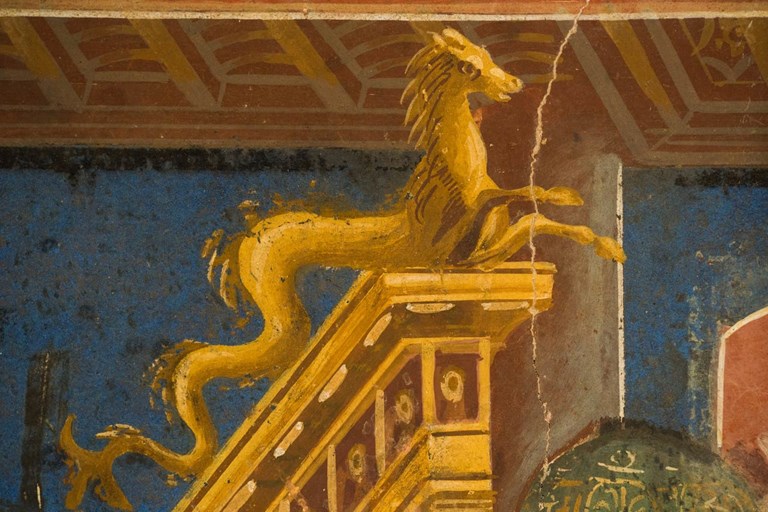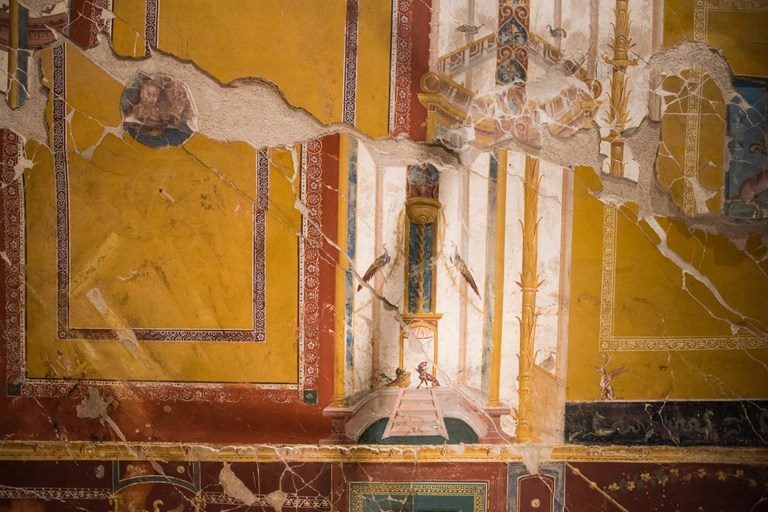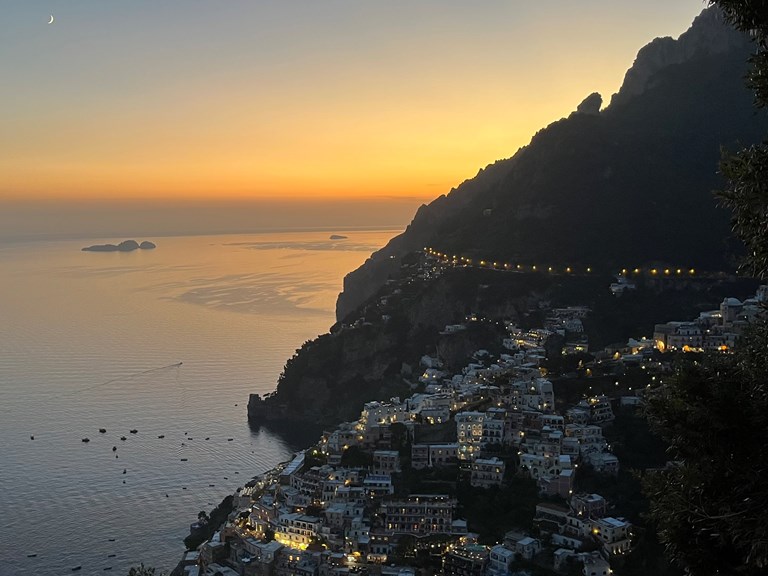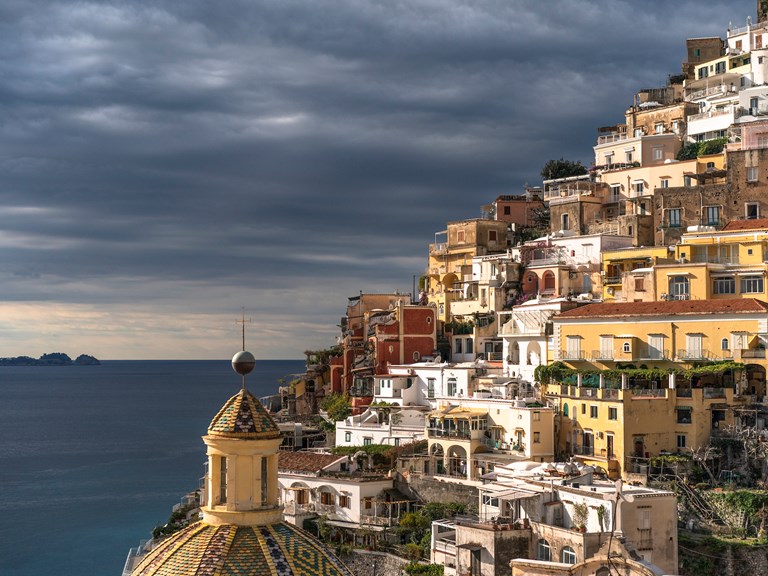POSITANO’S ROMAN VILLA
28.09.2018 POSITANO
True, archaeologists have known for over two and a half centuries that the remains of a patrician villa lay beneath Positano’s mother church, Santa Maria Assunta. In April 1758, when the rediscovery of Pompeii and Herculaneum was already well advanced under the cultured Bourbon King of Naples Charles VII (soon to become Charles III of Spain), royal archaeologist Karl Weber filed a report in which he detailed an exploratory excavation he had made in Positano. He described a series of small rooms with painted walls that had lost most of their plaster, and a precious white marble mosaic floor.
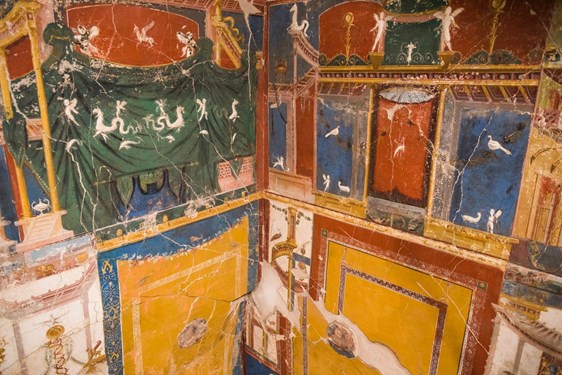
View
Even back then, the villa was at risk of predatory treasure seekers. The local parish priest admitted to Weber that he had carried out his own amateur dig years before, and sold many of the artefacts he found to the well-endowed convent of Santa Teresa in Naples. But much remained below ground, saved for posterity by the sheer difficulty of excavating below existing buildings and streets without causing subsidence.
In the 1920s a local butcher stumbled on parts of the Roman villa while digging out a cellar at the back of his shop as a cold storage room for meat. Luckily, the local archaeological superintendent intervened, and carried out a preliminary study of the structure. But it wasn’t until 2004 that a proper scientific excavation of the villa began, one that proceeded in two phases (2004-2006 and 2015-16).
Most of what emerged had never before been brought to light. And it is truly extraordinary.
Then the details begin to emerge. Winged cherubs ride curly-tailed sea serpents against a backdrop of pleated green theatre drapes. A square medallion shows Chiron, the centaur, giving the young Achilles a music lesson. Elsewhere, a jaunty leopard with a bay-garland neck bow poses below two preening peacocks. Painted with the naïf, skewed perspective that characterized Roman art, of this period a high balcony above a tall door overlooks a stage – or is it a piazza? It’s difficult to tell in this architectural fantasy that fuses the domestic and theatrical worlds. Like many rich Roman families (and not a few contemporary ones), the owners of this sumptuous villa lived their lives as a kind of performance, a series of opulent gestures and rituals. These ‘proscenium arch’ murals were a form of harmless escapism, the Instagram filter they used to mask the rigours and uncertainties of daily existence in the first century AD.
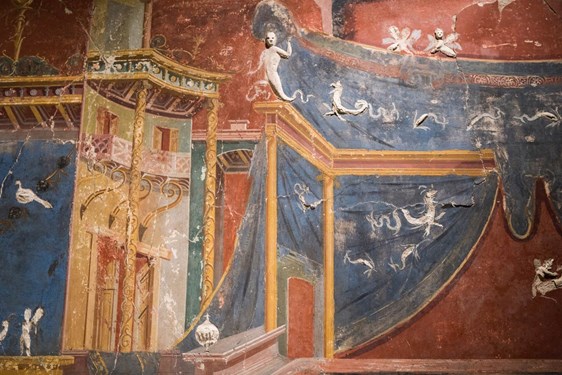
View
Nobody knows who these owners were. There is a theory that the villa may have belonged to Posides Claudii Caesaris, a freed slave who rose to become one of the most sought-after architects of Imperial Rome. But it’s just a theory, resting on two circumstantial pillars – the fact that Posides is known to have designed summer villas for the Roman elite further north, around the Bay of Naples, and the tempting idea that he may have given his name to the town of Positano.
What we do know for sure is how the villa came to be buried eleven metres underground. When Vesuvius erupted in August 79 AD, the Amalfi Coast was not spared the destruction that rained down on Pompeii and Herculaneum. Molten rock, pumice and hot ash was thrown up to 21 miles into the air, more than enough to clear the barrier of the Monti Lattari, and due to the prevailing winds, Positano was covered in several metres of volcanic detritus. As if that wasn’t enough, the torrential rains which followed the eruption led to mudslides all along the coast, which finished the destructive work of the pumice dump. The east wall of the triclinium bears eloquent witness to the destructive forces unleashed: it fractured under the weight of the mudslide, so that the mural pattern on the bottom of the wall and that at the top no longer line up.
Passing over transparent walkways, the visitor route through the Museo Archeologico Romano Santa Maria Assunta, which opened to the general public in August 2018, leads up from the Roman-era triclinium into two of the Postiano mother church’s crypts. The larger one, dating from the 18th century, is lined by some rather macabre sedili funebri or ‘funeral seats’, where the corpses of dead monks were propped up to dry out and decompose. The smaller crypt, situated below the upper church’s presbytery and apse, is a simple, evocative Romanesque space.
The museum is open daily from 9am to 9pm. Entrance (€15) is via 30-minute guided tours, which can be booked online, with a maximum of 10 people allowed in each group. Visitors are advised to wear something warm even in the height of summer, as it’s decidedly cool down here.
Photos © Roberto Salomone
MaR Positano
Museo Archeologico Romano
Santa Maria Assunta
Piazza Flavia Gioia 7
tel +39 089 812 2535
https://marpositano.it
Le Sirenuse Newsletter
Stay up to date
Sign up to our newsletter for regular updates on Amalfi Coast stories, events, recipes and glorious sunsets

